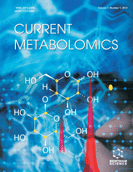Abstract
Background: Analysis of volatile metabolites derived from the human breath or biofluids provides noninvasive means of detecting and monitoring diseases that occur throughout the body. Diseases arise from different mechanisms that cause alterations in normal physiological processes. Mechanisms of disease (pathogenesis) result in the production of unique mixtures of abnormal volatile organic compounds (VOCs), referred to as disease biomarker metabolites when associated with specific diseases. Regardless of where disease biomarkers originate in the body, they are picked up by the circulatory system and eventually expelled out through the lungs. Analysis of complex mixtures of disease biomarkers provides effective diagnostic clues for detecting the presence of specific disease processes occurring in the body.
Methods: Recent progress in the development of electronic-nose (e-nose) applications and technologies for clinical examinations and human disease diagnoses are reviewed.
Results: Metabolomics has been useful in identifying biomarkers and mechanisms of disease, but is often time-consuming and not easily applied to disease diagnosis. E-nose devices are relatively new gas-sensing technologies that are small, simple, portable and particularly useful for noninvasive early disease detection. Some major advantages of using e-noses for disease diagnoses are that they provide quicker, more efficient diagnostic results and cause less stress, anxiety, and no pain to patients.
Conclusion: Recent advancements in the use of e-nose devices to detect complex mixtures of disease biomarkers are providing the great potential for these instruments to facilitate and accelerate point-ofcare clinical disease diagnoses.
Keywords: Aroma signature patterns, breathprints, disease biomarkers, electronic aroma detection, e-nose, metabolomics.
Graphical Abstract
Current Metabolomics
Title:Biomarker Metabolite Signatures Pave the Way for Electronic-nose Applications in Early Clinical Disease Diagnoses
Volume: 5 Issue: 2
Author(s): Alphus Dan Wilson*
Affiliation:
- USDA Forest Service, Southern Hardwoods Laboratory, P.O. Box 227, Stoneville, MS,38703- 0227,United States
Keywords: Aroma signature patterns, breathprints, disease biomarkers, electronic aroma detection, e-nose, metabolomics.
Abstract: Background: Analysis of volatile metabolites derived from the human breath or biofluids provides noninvasive means of detecting and monitoring diseases that occur throughout the body. Diseases arise from different mechanisms that cause alterations in normal physiological processes. Mechanisms of disease (pathogenesis) result in the production of unique mixtures of abnormal volatile organic compounds (VOCs), referred to as disease biomarker metabolites when associated with specific diseases. Regardless of where disease biomarkers originate in the body, they are picked up by the circulatory system and eventually expelled out through the lungs. Analysis of complex mixtures of disease biomarkers provides effective diagnostic clues for detecting the presence of specific disease processes occurring in the body.
Methods: Recent progress in the development of electronic-nose (e-nose) applications and technologies for clinical examinations and human disease diagnoses are reviewed.
Results: Metabolomics has been useful in identifying biomarkers and mechanisms of disease, but is often time-consuming and not easily applied to disease diagnosis. E-nose devices are relatively new gas-sensing technologies that are small, simple, portable and particularly useful for noninvasive early disease detection. Some major advantages of using e-noses for disease diagnoses are that they provide quicker, more efficient diagnostic results and cause less stress, anxiety, and no pain to patients.
Conclusion: Recent advancements in the use of e-nose devices to detect complex mixtures of disease biomarkers are providing the great potential for these instruments to facilitate and accelerate point-ofcare clinical disease diagnoses.
Export Options
About this article
Cite this article as:
Dan Wilson Alphus*, Biomarker Metabolite Signatures Pave the Way for Electronic-nose Applications in Early Clinical Disease Diagnoses, Current Metabolomics 2017; 5 (2) . https://dx.doi.org/10.2174/2213235X04666160728161251
| DOI https://dx.doi.org/10.2174/2213235X04666160728161251 |
Print ISSN 2213-235X |
| Publisher Name Bentham Science Publisher |
Online ISSN 2213-2368 |
 65
65 5
5Related Articles
-
Issues in Rehabilitation of Cognitive Deficits in Schizophrenia: A Critical Review
Current Psychiatry Reviews Prevalence of Pre-Existing Risk Factors for Adverse Events Associated with Atypical Antipsychotics Among Commercially Insured and Medicaid Insured Patients Newly Initiating Atypical Antipsychotics
Current Drug Safety Adenosine A2A Receptor Antagonists and Parkinsons Disease: State of the Art and Future Directions
Current Pharmaceutical Design Transcriptomics of Antipsychotic Drug Function: What have we Learned from Rodent Studies?
Current Psychopharmacology Clinical Applications of MAO-Inhibitors
Current Medicinal Chemistry Treatment of Patients with Schizophrenia and Substance Abuse Disorders
Current Pharmaceutical Design Long-Acting Antipsychotic Medications
Current Drug Targets Systemic Redox Biomarkers in Neurodegenerative Diseases
Current Drug Metabolism The Role of Atypical Antipsychotic Agents in the Treatment of Schizophrenia and Schizoaffective Disorders in the Elderly
Current Drug Safety Serotonin 1A Receptors on Astrocytes as a Potential Target for the Treatment of Parkinson’s Disease
Current Medicinal Chemistry An Update on Human Stem Cell-Based Therapy in Parkinson's Disease
Current Stem Cell Research & Therapy Pharmacological Treatments for Attention-Deficit/Hyperactivity Disorder (ADHD) in Adults
Current Psychiatry Reviews Treatment of Epileptic Encephalopathies
Current Pharmaceutical Design The Modulation of Pain by Metabotropic Glutamate Receptors 7 and 8 in the Dorsal Striatum
Current Neuropharmacology Spirulina in Health Care Management
Current Pharmaceutical Biotechnology Association of Posture Instability with Dopamine Drop of Nigrostriatal System and Hypometabolism of Cerebral Cortex in Parkinson’s Disease
Current Neurovascular Research Development of Tablet Device App for Parkinson’s Disease Patients’ Continuous Self-Monitoring and Management
Neuroscience and Biomedical Engineering (Discontinued) Mesenchymal Cells in the Treatment of Spinal Cord Injury: Current & Future Perspectives
Current Stem Cell Research & Therapy Cannabinoids and Neuro-Inflammation: Regulation of Brain Immune Response
Recent Patents on CNS Drug Discovery (Discontinued) Is a "Mitochondrial Psychiatry" in the Future? A Review
Current Psychiatry Reviews









.jpeg)








